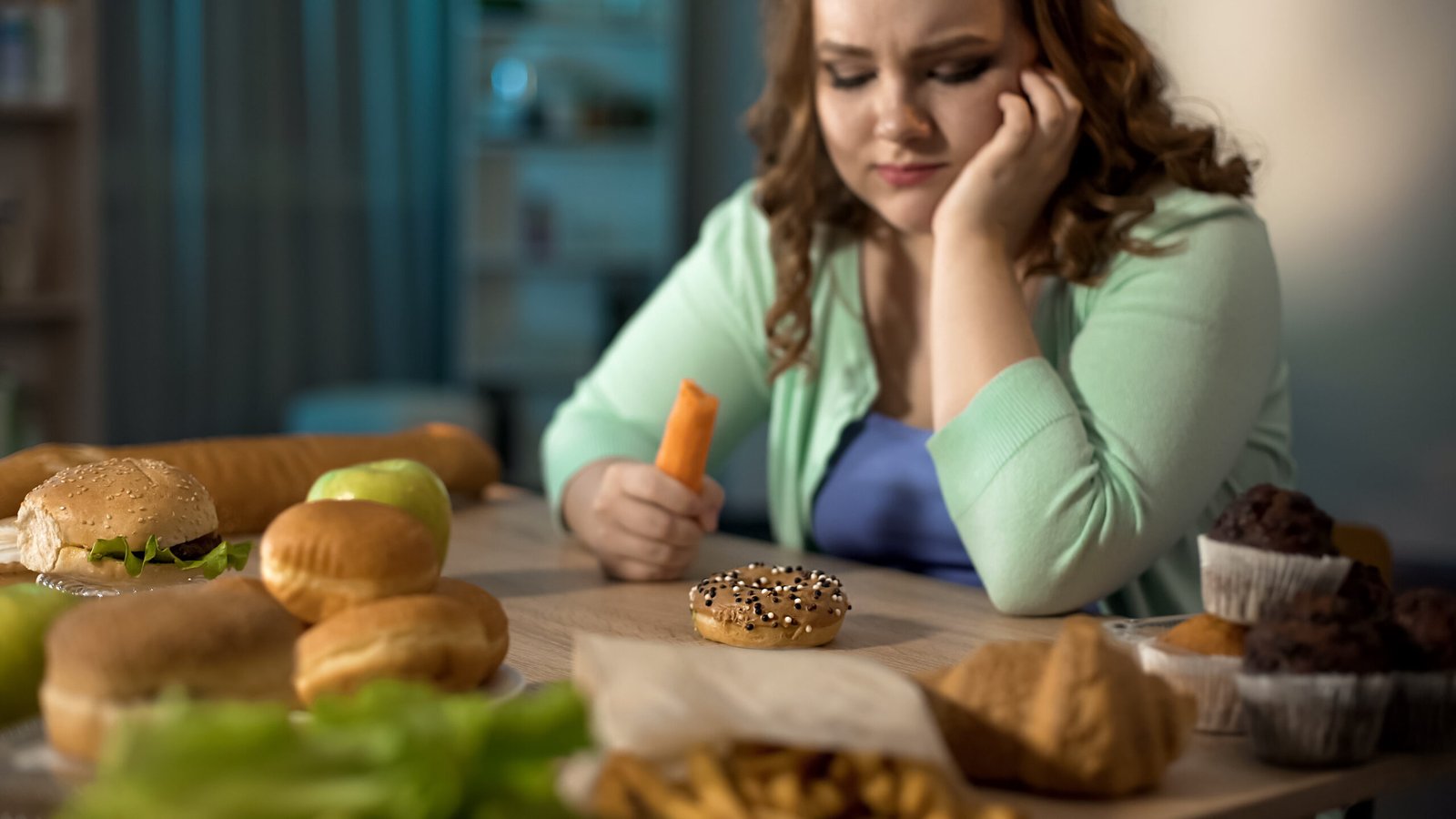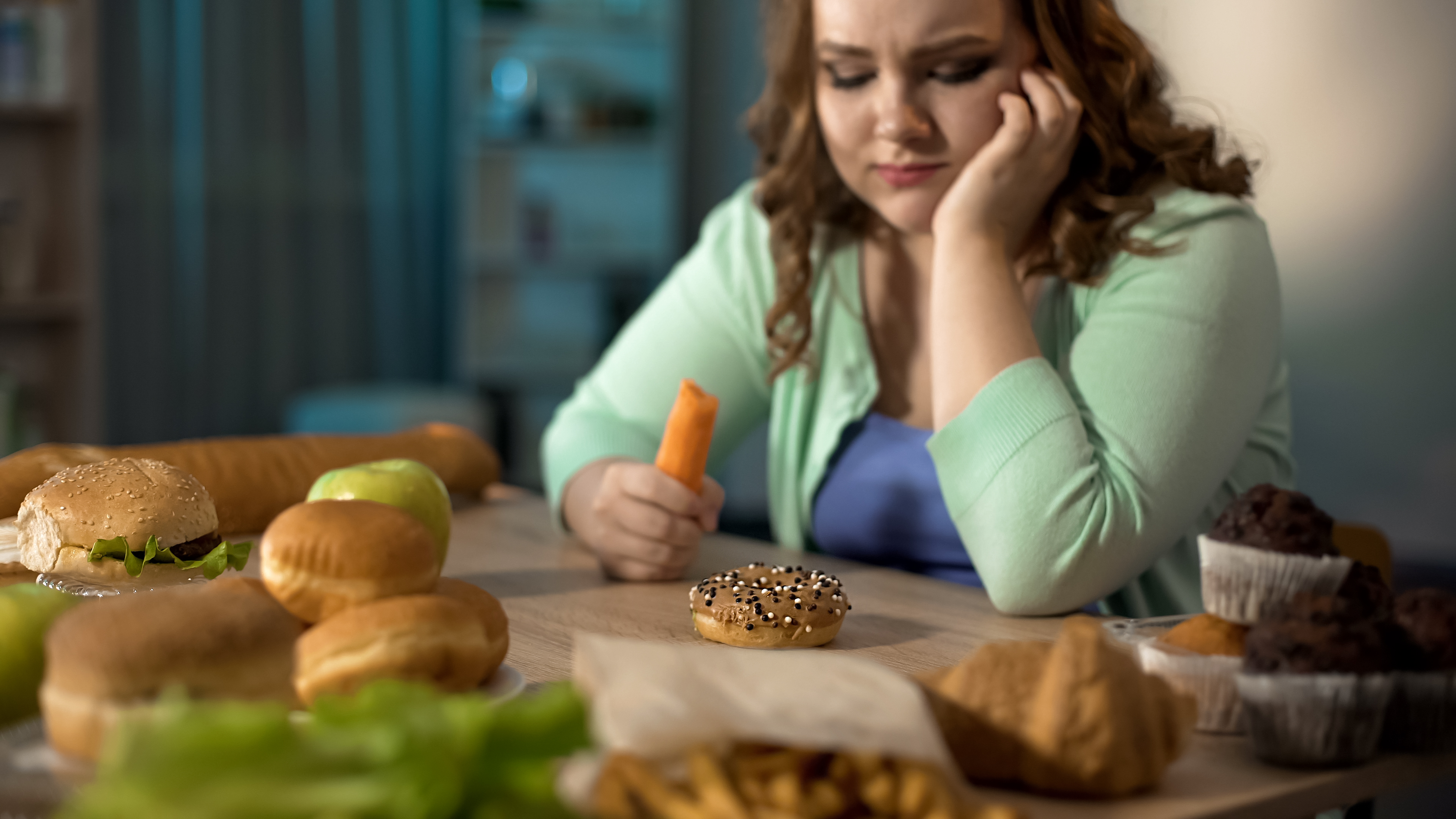
Hungry fat lady eating carrot, dreaming about donut and fast food, healthy diet
Breaking the Cycle: Achieving Food Freedom Through Emotional Clarity
You wake up promising today will be different. No more guilt. No more emotional eating. Yet, by evening, the cycle begins again. Sound familiar? Emotional clarity just might be the missing link to food freedom. Imagine understanding your deepest feelings and finding peace without turning to food. You’ll learn how to break free from food guilt and embrace self-love. Ready for a fresh start? Learn more about emotional eating and food guilt here. Discover how gaining emotional clarity can transform your relationship with food and yourself.
Understanding Emotional Eating

Understanding why we eat when emotions run high is crucial. Emotional eating can often mask deeper issues. By exploring these feelings, we can start to unravel the patterns that keep us trapped.
Recognizing Emotional Triggers
Emotional triggers are events or situations that provoke intense feelings, leading to emotional eating. Identifying these triggers is the first step toward gaining emotional clarity. Stress, boredom, and loneliness are common culprits.
For instance, a stressful day at work might lead to reaching for a snack not out of hunger, but as a comfort. Recognizing this pattern is crucial. Creating a journal to track these moments can be enlightening, helping one see the connection between emotions and eating habits.
Engaging with these triggers helps in reducing their power. Reflect on why certain emotions prompt eating, and seek healthier ways to respond. With awareness, one can begin to make mindful choices, leading to food freedom. 🌱
The Impact of Food Guilt
Food guilt often follows emotional eating episodes, creating a vicious cycle. This guilt can intensify negative feelings, perpetuating the desire to eat emotionally. Understanding how guilt affects one’s mental and emotional state is key to breaking free.
Imagine the weight of guilt after consuming food not out of hunger but emotional need. This guilt can affect self-esteem, making individuals feel trapped in their eating habits. Recognizing this impact is essential for emotional healing.
Consider replacing guilt with self-compassion. Accept that food is not the enemy; it’s the emotional response that needs addressing. Practice self-love by forgiving yourself and focusing on progress, not perfection. Reframe guilt as a learning opportunity to foster a healthier relationship with food. 💪
Achieving Emotional Clarity

Achieving emotional clarity involves understanding and addressing the root causes of emotional eating. By shifting your mindset and cultivating self-love, you can foster a healthier relationship with food.
Mindset Reprogramming Techniques
Reprogramming your mindset is a powerful tool for addressing emotional eating. It involves changing how you perceive food and emotions. This change can lead to profound shifts in behavior and thought patterns.
Identify Negative Thoughts: Recognize when your mind spirals into negative thinking about food.
Challenge These Thoughts: Ask yourself if these thoughts are true or if they’re based on past experiences.
Replace with Positive Affirmations: Use statements like “I am in control of my choices” to counter negative thoughts.
These techniques help retrain your brain to respond differently to emotional eating triggers. Over time, you’ll build resilience and strengthen your emotional clarity. 📘
Cultivating Self-Love for Healing
Self-love is a cornerstone of emotional healing. When you truly value yourself, the need for emotional eating diminishes. Cultivating self-love means accepting your flaws and celebrating your strengths.
Start by practicing self-care. This might include taking time for activities that bring joy or relaxation. Reflect on your achievements, no matter how small. Self-love isn’t about perfection; it’s about acceptance.
Remember, every step towards self-love is a step away from food guilt. By prioritizing your emotional well-being, you create a solid foundation for lasting change. This journey towards self-love is empowering and transformative. ❤️
Path to Food Freedom

Embarking on the path to food freedom means embracing emotional healing and self-acceptance. By taking practical steps, you can break free from the cycle of emotional eating.
Practical Steps for Emotional Healing
Emotional healing requires intentional action. By taking small, consistent steps, you can gradually overcome emotional eating patterns. Here are some actions to consider:
Maintain a Food and Mood Journal: Track what you eat and how you feel to identify patterns.
Practice Mindful Eating: Pay attention to the taste, texture, and sensation of food.
Seek Support: Consider reaching out to a coach or support group for guidance.
Each step builds on the last, creating momentum towards emotional clarity and food freedom. These actions promote self-awareness and encourage healthier habits. 🌟
Embracing Self-Worth and Acceptance
Embracing self-worth and acceptance is essential for achieving true food freedom. Recognize that your value isn’t tied to what or how you eat. This realization can liberate you from the burdens of guilt and shame.
Start by acknowledging your intrinsic worth. Engage in affirmations that reinforce your value beyond physical appearance. Accept that it’s okay to have days where food choices aren’t perfect.
By fostering acceptance, you pave the way for a more balanced relationship with food. This mindset shift is crucial for sustaining emotional clarity and freedom. Embrace your journey with compassion and patience. 🌻
Call to Action
Are you ready to take the next step towards emotional clarity and food freedom? Join our 90-day HYL360: Emotional Freedom Program and experience the transformation yourself. Learn more here. Let us guide you on your path to healing and self-love. 🌈



